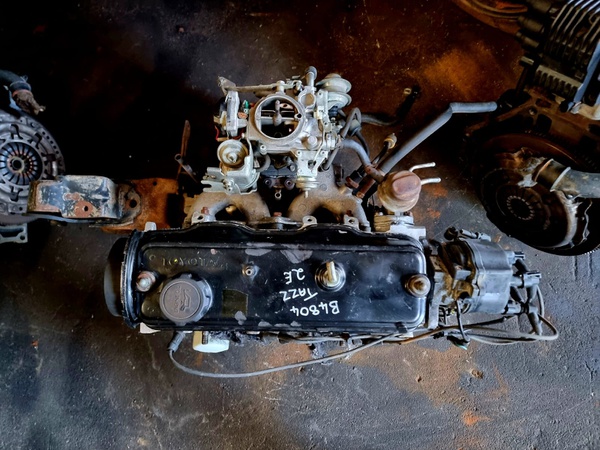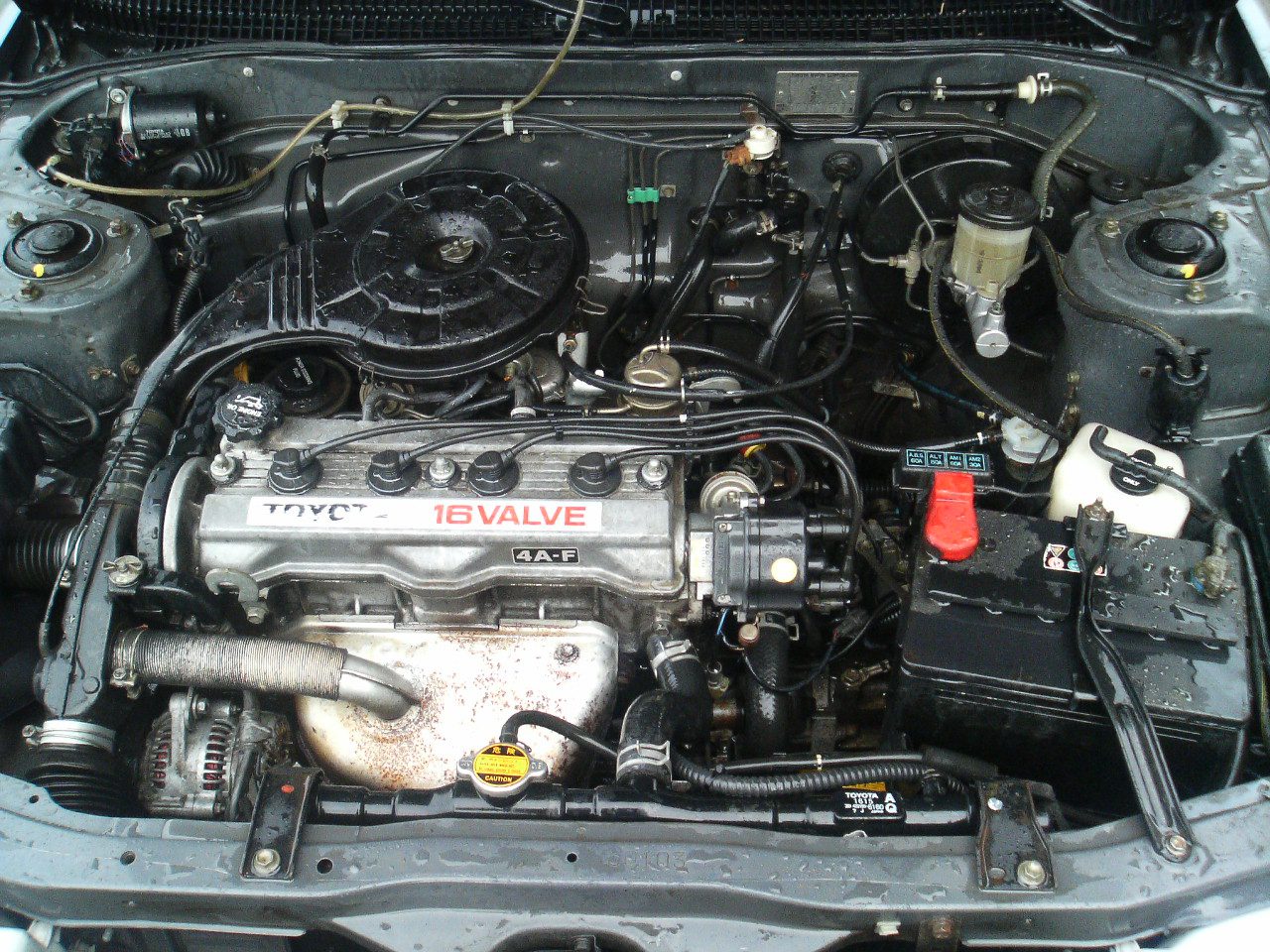How the Toyota Tazz Became a Staple in the Compact Car Market
How the Toyota Tazz Became a Staple in the Compact Car Market
Blog Article
Discover the most up to date Trends in Engine Innovation With Tazz
In the rapidly developing landscape of auto modern technology, Tazz stands at the forefront, highlighting substantial improvements in engine systems that prioritize both development and sustainability. From crossbreed engines that optimize gas effectiveness to the appearance of hydrogen gas cells, the trends forming modern-day powertrains are not just enhancing efficiency yet also addressing essential ecological challenges.
Crossbreed Engine Innovations
Hybrid engine technologies stand for a critical shift in automotive technology, combining the advantages of internal combustion engines with electric propulsion systems. This assimilation not only boosts gas performance but likewise minimizes emissions, meeting increasingly rigorous ecological policies. By making use of both energy resources, hybrid engines can enhance performance, delivering power when needed while preserving fuel throughout less requiring motoring conditions.
Recent developments in hybrid modern technology consist of renovations in battery efficiency and regenerative braking systems. These advancements permit greater power healing throughout slowdown, which can be redirected to assist in velocity or power auxiliary systems. In addition, producers are concentrating on portable layouts and lightweight materials to take full advantage of the effectiveness of hybrid powertrains.
The growth of plug-in hybrids has actually additionally increased the market, enabling drivers to charge their vehicles making use of basic electrical outlets. This function frequently permits substantial all-electric array, more decreasing reliance on conventional gas. tazz. As the vehicle market remains to evolve, hybrid engine innovations are anticipated to play an essential role in linking the space in between traditional cars and fully electric models, giving a transitional service that deals with diverse consumer demands and preferences
Breakthroughs in Electric Powertrains
The vehicle landscape is swiftly progressing, with electrical powertrains emerging as a leading pressure in sustainable transport. Advancements in electrical lorry (EV) technology are significantly enhancing efficiency, individual, and effectiveness experience. Secret innovations include renovations in battery chemistry, which have actually raised energy thickness, decreased charging times, and prolonged total battery life.
Solid-state batteries, for instance, guarantee to revolutionize the marketplace by providing greater safety and security and performance contrasted to traditional lithium-ion cells. Improvements in regenerative braking systems are making it possible for vehicles to recuperate energy during slowdown, contributing to general efficiency.
In addition to battery modern technology, electrical motor styles are ending up being extra advanced. Technologies such as integrated electric motors and advanced thermal management systems are helping to optimize power shipment and lower weight, ultimately enhancing car characteristics.

Jointly, these advancements emphasize the dedication to change towards cleaner, extra reliable transport services, positioning electric powertrains at the leading edge of vehicle advancement.
The Surge of Hydrogen Gas Cells
Significantly, hydrogen gas cells are acquiring grip as a practical option to typical inner burning engines and battery electrical lorries. This modern technology takes advantage of the chemical energy stored in hydrogen, transforming it right into electrical energy via an electrochemical response with oxygen. The key by-product of this process is water, making hydrogen fuel cells an eco-friendly option with zero exhausts at the tailpipe.

Automakers are significantly purchasing hydrogen fuel cell modern technology, recognizing its potential for long-range applications and quick refueling capacities that match traditional gas. Additionally, markets such as heavy-duty transport and public transit are especially fit for hydrogen gas cells, where battery electrical options may drop short as a result of weight and variety limitations.
As research study and financial investment remain to expand, hydrogen gas cells are positioned to play a significant role in the future landscape of tidy transport and energy services.
Enhancements in Internal Burning Engines
Innovations in internal burning engine (ICE) technology are changing standard vehicles to satisfy modern-day environmental criteria and efficiency expectations. Direct fuel shot, for circumstances, enables for far better atomization of fuel, leading to even more full combustion and improved power output.
In addition, turbocharging has actually acquired prestige, enabling smaller sized engines to deliver greater performance without the weight of bigger engines - tazz. This innovation not just improves efficiency however also contributes to reduce fuel consumption. Variable shutoff timing systems are likewise being refined, enabling engines to adjust to different driving conditions for boosted torque and responsiveness
Additionally, using light-weight materials in engine construction is becoming conventional, further enhancing fuel efficiency by lowering overall vehicle weight. Engine control systems (ECUs) are increasingly innovative, making it possible for over at this website real-time adjustments that optimize performance and discharges.
These enhancements jointly symbolize a critical change in ICE modern technology, aligning with international sustainability goals while still giving the efficiency vehicle drivers anticipate from their cars. As the market advances, these improvements continue to form the future of standard automobile design.
Future Trends in Engine Efficiency
Substantial innovations in engine performance are expected as manufacturers concentrate on incorporating sophisticated technologies to fulfill stringent environmental regulations and customer needs. The shift towards electrification, crossbreed systems, and different fuels is reshaping the vehicle Get More Info landscape, driving technologies that improve fuel economy and reduce emissions.
One of the essential trends is the execution of advanced materials and producing strategies. High-strength alloys and lightweight composites add to lowered car weight, therefore boosting general performance. In addition, the adoption of turbocharging and variable valve timing modern technologies permits improved power outcome from smaller engines, additionally boosting fuel economy.

Conclusion
In conclusion, the expedition of engine technology reveals significant improvements that focus on sustainability and performance. Developments in hybrid engine systems, electrical powertrains, and hydrogen gas cells demonstrate a dedication to lowering exhausts while enhancing efficiency. Renovations in inner combustion engines and a focus on light-weight materials contribute to overall engine performance. As the automotive sector remains to advance, these fads will play a crucial duty fit a cleaner and even more lasting future for transportation.
From crossbreed engines that optimize fuel performance to the emergence of hydrogen gas cells, the trends forming contemporary powertrains are not just improving performance next yet additionally dealing with important ecological challenges.Hybrid engine advancements stand for a crucial shift in vehicle modern technology, combining the benefits of internal burning engines with electric propulsion systems.Furthermore, turbocharging has gotten prestige, allowing smaller sized engines to supply higher efficiency without the weight of bigger engines. Furthermore, the adoption of turbocharging and variable valve timing technologies enables for enhanced power output from smaller sized engines, further boosting gas economic climate.
Enhancements in internal combustion engines and a focus on light-weight materials contribute to general engine efficiency.
Report this page